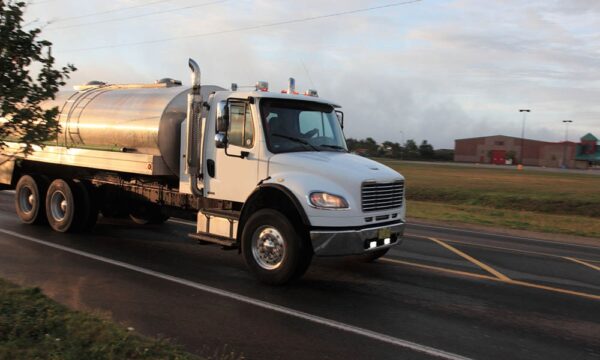
With climate change becoming a more pressing issue every day, the federal government has issued a new set of standards for the trucking industry. These new standards will not only affect all new trucks built in the future, but will also require modifications to existing trucks to be completed over the next ten years.
New Federal Standard Aimed at the Trucking Industry
The new trucking industry standards, known widely as “the Phase 2 standards,” apply not only to semi trucks but also to big rigs, work trucks, delivery trucks, school buses, dump trucks and other moderate- to heavy-duty vehicles and equipment. And, for the first time, the Phase 2 rules also apply to trailers used in combination with tractors.
United States Transportation Secretary Anthony Foxx, who played a role in developing the new standards, acknowledged that the change they seek to create is ambitious, but added that it is achievable. The Phase 2 regulations allow semi truck manufacturers to achieve these emission reductions through their choice of different technologies, such as advanced aerodynamics, engine improvements, or automatic tire inflation. In addition, regulators have simplified the certification requirements for small businesses and allowed them an extra year to begin implementing the changes.
The American Trucking Association has received these new regulations with “cautious” endorsement. While the standards were being developed, the ATA had weighed in with concerns about adequate lead-time to develop the technology necessary to comply, as well as flexibility for truck manufacturers. Glen Kedzie, the ATA’s vice president and environmental expert, expressed appreciation that their concerns had been heard and taken into account.
Reduce Carbon Emissions and Gas Consumption
The trucking industry is responsible for 20 percent of the CO2 emitted into the air each year. Also known as “greenhouse gas,” an overabundance of CO2 into the air has the same effect as a gas leak in your home. CO2 is poisonous and contributes not only to global warming but also harms the quality of air that humans breathe, causing health problems and the break down of nature’s ecosystems.
The new standards took years to achieve acceptance, undergoing multiple reviews by the Environmental Protection Agency (EPA) and the Transportation Department’s National Highway Traffic Safety Administration. Unveiled at the beginning of August, the new standards comprise a 1690-page document. The outcome intends for a 25 percent reduction in CO2 emissions, which means 1.1 billion metric tons less polluted air.
Not only will the air be less polluted, but the United States will significantly cut its dependence on fossil fuels as a result of the new trucking standards. With the use of more fuel-efficient trucks, not only will overall oil consumption drop by two billion barrels, but vehicle owners are expected to save about $170 billion in fuel costs.
The Potential Opportunities
EPA administrator Gina McCarthy says that the Phase 2 standards put the United States “way out ahead of any other country.” By developing these new emissions standards, she added, the new standards “will ensure that the United States continues to lead the world in developing fuel-efficient technologies.”
“We are at a pivotal point in our fight against climate change and its catastrophic consequences,” said Transportation Secretary Anthony Foxx. As the demand grows for more fuel-efficient technology, those who spearhead the adaptation to the new trucking industries are poised to be global leaders in technology development. Secretary Anthony Foxx promised that the Phase 2 standards set the scene for “a huge economic opportunity for those in the trucking industry, whether they are owner-operators or large fleets.”
Threat to Smaller Fleets
It cannot be denied that adapting to Phase 2 standards will pose a significant cost to the trucking industry and with possibly greater impact on smaller fleets since initial purchase prices of new vehicles are expected to increase. Industry regulators estimate that by 2021, the cost of a semi-truck will rise as much as $6,400; by 2027, the cost could rise by $12,000 or more.
Transportation Secretary Foxx, in his blog, predicted “The additional cost of a new truck will be recouped within 2-4 years, saving truck owners more over the long haul.”
While bigger trucking companies and giant suppliers (such as Pepsi-Co, UPS, and Waste Management) have praised the new regulations as a “win-win” for the industry and for the environment, some smaller fleets fear that the up-front cost will bar them from doing business in the future.
Norita Taylor, spokeswoman for the Owner-Operator Independent Drivers Association, asserted that the new standards place too great a financial burden on small fleets. “Forcing a standard that causes so many problems with reliability and maintenance ultimately has no benefits to the environment if no one wants to buy it,” she said.
On the other side of the issue, some environmental experts are dissatisfied that the Phase 2 regulations don’t go far enough. But, as Glen Kedzie told the media back in June, the new regulations are the government’s best effort to “strike a balance among efficiency, emission improvements and the economy.”
